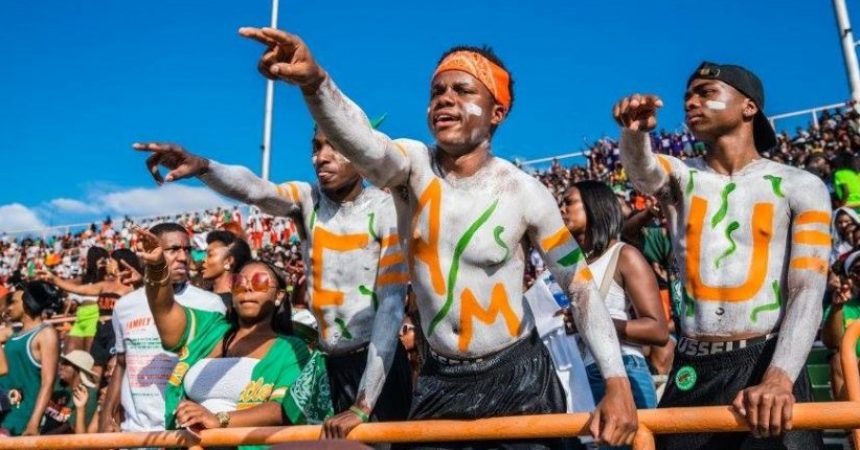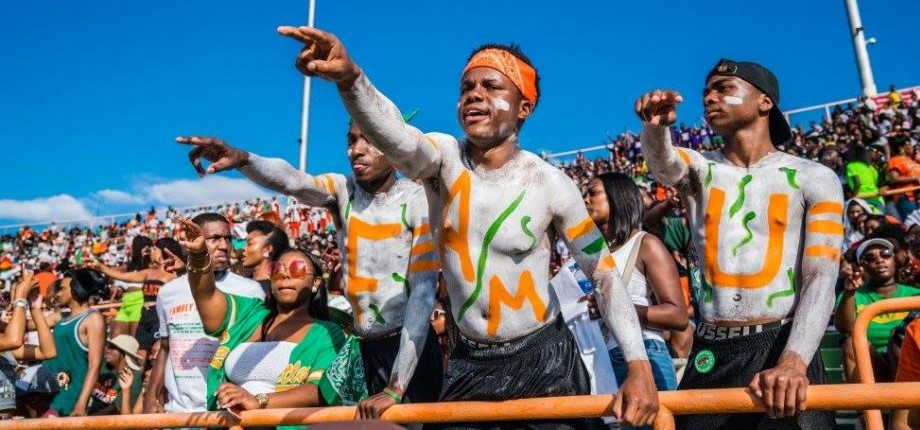
Renovation could return Bragg Stadium to top-notch level
By St. Clair Murraine
Outlook staff writer
The last major renovation had already taken place at Bragg Stadium by the time Wally Williams joined the FAMU football program as an offensive lineman.
Williams, a Tallahassee native who went on to play a lengthy NFL career, still has memories of how other programs in the Mid-Eastern Athletic Conference viewed the place where the Rattlers played their home games.
“We were the envy of our conference,” Williams said. “It wasn’t close. Our facilities was top-notched.”
Age eventually took a toll on the stadium that was built in 1957, despite the renovations in the early 1980s. As Williams recalled, programs that lacked the kind of stadium that FAMU had began taking steps to improve their home fields.
Meanwhile, they “moved past our program from a facility standpoint and a financial demographics as well,” Williams said.
About a month ago, Williams and other FAMU stakeholders began to feel good about Bragg Stadium again. The Blueprint Intergovernmental Agency unanimously agreed to give the university $10 million for the next round of renovations at Bragg Stadium.

Photo by FAMU athletics
“This could actually begin the process of looking the part as being a premier HBCU,” said Williams, who in 1999 gave $50,000 to his alma mater for renovations to its weight room. “We have the lineage, we have the legacy and all those things but in this day and age of athletics and how things need to look, we’ve fallen behind.”
Now 40 years after its last major renovation, state engineers say Bragg needs upgrades to remain usable as a football stadium that’s safe for fans. The Blueprint Intergovernmental Agency funding cleared the first hurdle for renovation.
Col. Gregory Clark, president of the FAMU National Alumni Association, applaud the decision. Upgrades to Bragg will complement changes that began when Willie Simmons was hired three seasons ago as head football coach and the recent hiring of Kortne Gosha as athletic director, Clark said.
“I think this is long overdue,” he said. “We are going in the right direction. We have the right administration in place, we have the right football coach in place and the only thing that was missing was to complement our athletic department with the right athletic director. We did that when we hired Kortne Gosha. With all those things together, FAMU athletics is going to take a huge leap from where it was.”
One of the essential upgrades planned for Bragg is the addition of accessibility for disabled fans. Improvements also include a new press box and rest rooms.
Without the upgrades, FAMU faced the possibility of not being able to play football at Bragg next season. That scenario would have been a double-whammy, Clark said.
“If there is no stadium to play, I don’t even want to begin to think about the revenue that will be lost just in the city of Tallahassee,” he said. “I think the city and county will get their return on investment by investing in Florida A&M University.”
Estimates peg the economic impact of FAMU football during a homecoming week to be about $2 million.
When the Rattlers return to playing at Bragg Stadium next season the team will be competing in the SWAC, following its recent departure from the Mid-Eastern Athletic Conference.
During the last five years, as late as 2017, drawings surfaced of a proposal to improve capacity at Bragg from its current 25,500 to a 35,000-seat stadium. They showed box seats on one side of the stadium – an element that’s not spelled out for the latest round of renovations.
Improvements to the stadium and the move to the SWAC could mean bigger than usual crowds for home games because SWAC fans are known for traveling. That will generate even more excitement for the football program, especially if the team wins, said Selvin Cobb, president of the FAMU Boosters.
“You bring more fans, you sell more tickets, sell more hot dogs and Pepsi,” Cobb said. “It just means more revenue will be generated.
“I’m really excited because I think this community is going to make fans and alumni who come to town realize that they have a responsibility to give back to the university.”
Last season, a new artificial turf was put in at Bragg, but no major work was done on the stadium itself. However, it was painted several times in the past 10 years.
The AI made its decision after more than an hour of discussion at its July 9 meeting. City Commissioner Dianne Williams-Cox called for the vote on the request for $10 million to renovate the Stadium.
The Blueprint Intergovernmental Agency is made up of city and county commissioners.
When the meeting was over, it seemed certain that the final approval to FAMU’s request will come when the Intergovernmental Agency meets for the final vote in the fall.
FAMU president Larry Robinson pointed to the stadium being a COVID-19 testing site where more than 20,000 people have been tested to make the point about the stadium being a multi-use facility. The stadium has also been the site of concerts, graduation ceremonies and high school football games.
In an opinion piece written the week following the vote, Robinson said the AI’s action “shows good faith.” He also wrote that it is “recognition of FAMU as one of Tallahassee’s major economic drivers, a treasured cultural resource and one of the key community assets on the city’s south side.”






